Snowshoeing has become quite popular as a winter activity, captivating sports lovers seeking to explore and enjoy beautiful, snow-covered landscapes. This surge in interest has significantly contributed to the expansion of the snowshoe market, creating a dynamic and rapidly growing demand for a diverse and high-quality range of snowshoes. This presents a golden opportunity for businesses in the outdoor and sporting goods industry.
However, to capitalize on this market, sellers must adopt a strategic approach when stocking, focusing on understanding and catering to the varied needs of snowshoe enthusiasts.
This guide will help you understand which types of snowshoes you should stock and how to stock strategically in 2024.
Table of Contents
Snowshoe market share and size
Types of snowshoes to stock in 2024
Important factors to consider when buying snowshoes
Conclusion
Snowshoe market share and size
The snowshoe market has experienced significant growth in recent years. In 2022, it was valued at US $25 million, according to Fact.MR, and is projected to hit an all-time high of US $49.8 million by 2033, growing at a CAGR of 6.5%.
The rising interest in outdoor sports at all times of the year has been a major factor behind this market’s growth. Millennials, in particular, are embracing snowshoeing, hence the increased demand for snowshoes.
The rising disposable consumer income in developed countries has also contributed to this growth. Consumers in countries like the United States and Canada are more willing to allocate disposable income to outdoor recreation, contributing to rising demand for niche sports equipment such as snowshoes.
Types of snowshoes to stock in 2024
Backcountry snowshoes
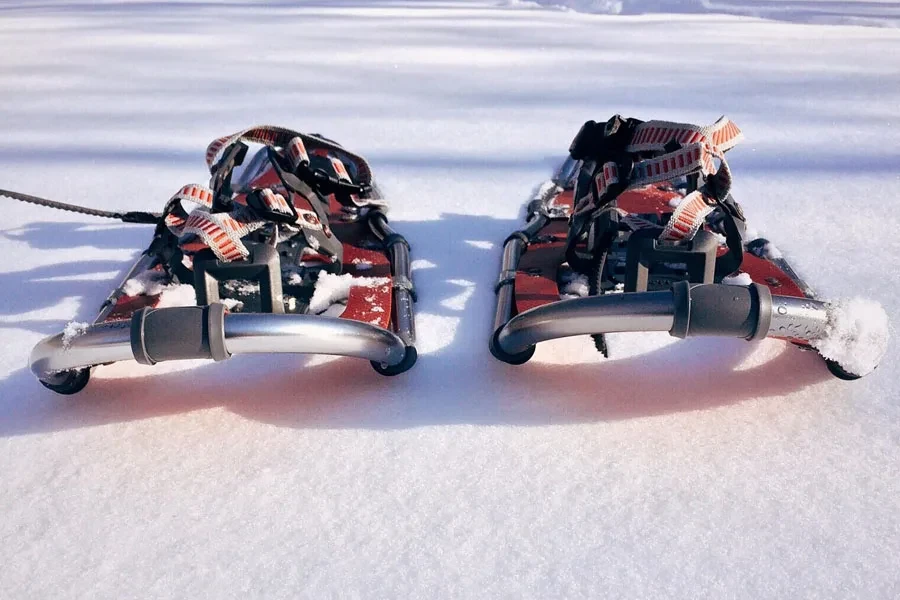
Backcountry snowshoes are designed to tackle tough terrains. They have crampons with hooks on the edges to grip steep and icy surfaces securely. In addition, these shoes feature adjustable binding systems for a comfortable fit, which minimizes slippage risk during ascents and descents.
Backcountry snowshoes are best suited for snowshoers who traverse challenging winter landscapes, particularly icy, steep terrains and deep snow-covered regions.
According to Google Ads, average monthly searches for backcountry snowshoes in the past year increased by 7.92% globally. This rising popularity presents a perfect chance for businesses to capitalize on their growing demand.
Recreational snowshoes
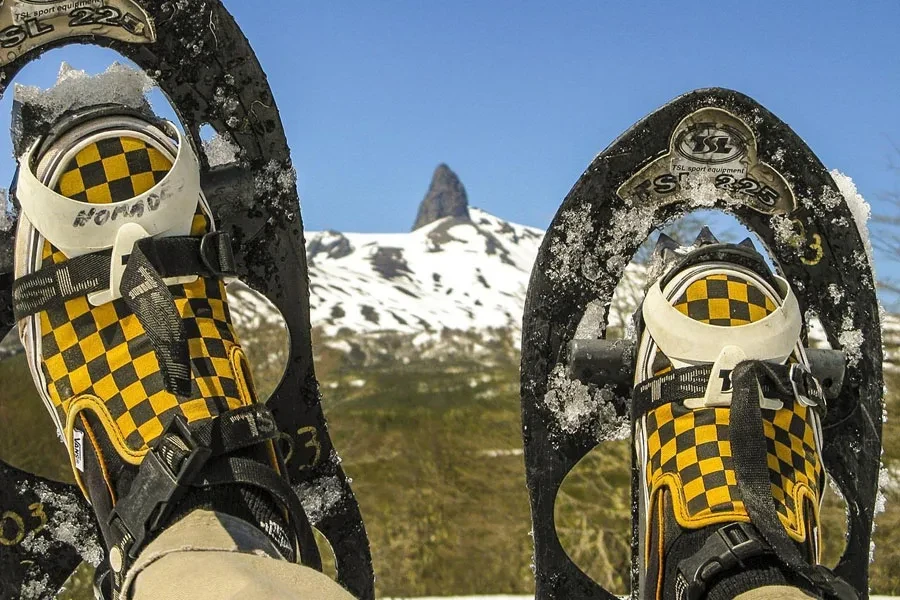
Recreational snowshoes offer a more relaxed experience on both flat and rolling hills. Unlike backcountry showshoes, these shoes feature less aggressive traction systems for added versatility. Moreover, they’re lightweight, and some have padded edges, making them great for hiking, downhill skiing, and snowboarding.
According to Google Ads, average monthly searches for recreational snowshoes increased by 8% in the past year . Stocking them will help to appeal to a wide range of users, including hikers, skiers, and snowboarders.
Running snowshoes
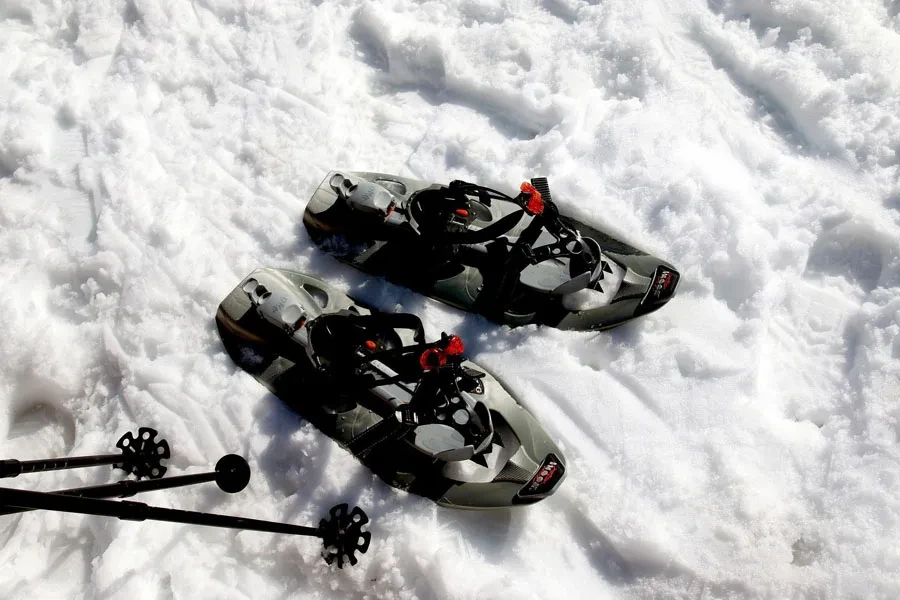
Running snowshoes are extra lightweight and come with fewer crampon teeth compared to other types of snowshoes, providing greater maneuverability. In addition, their binding systems are easily adjustable, allowing the wearer to adjust them according to different terrains or varying snow conditions.
Running snowshoes are not only popular but are in growing demand, with Google Ads stats recording a 7.75% increase in average monthly searches in the past year.
Mountaineering snowshoes
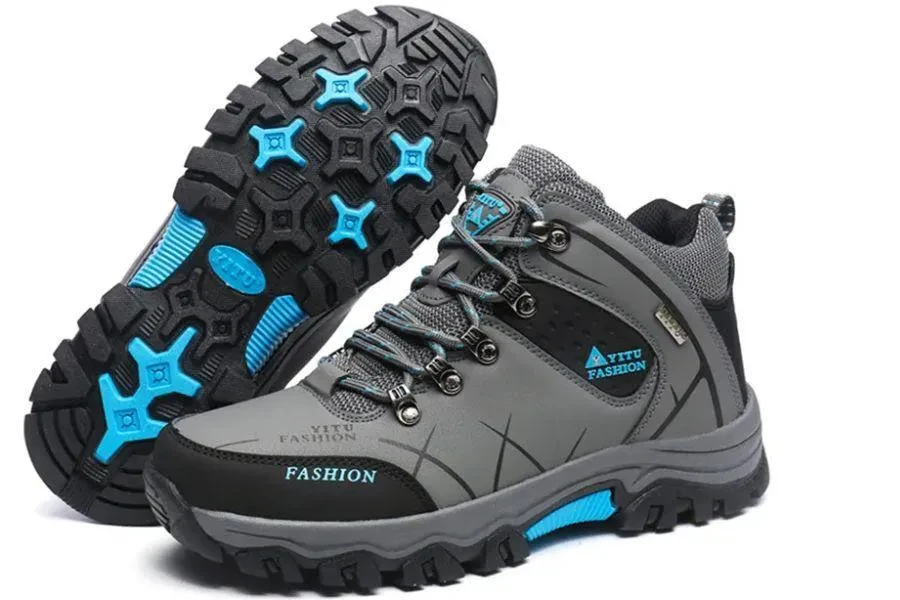
Mountaineering snowshoes are perfect for steep hikes and high-altitude snow trekking. Their complex binding system helps to maximize stability during ascents and descents. They also have aggressive traction rails to grip icy surfaces, adding to their stability and reliability.
According to Google Ads, average monthly searches for mountaineering snowshoes in the past year increased by 7.67%.
Kids’ snowshoes
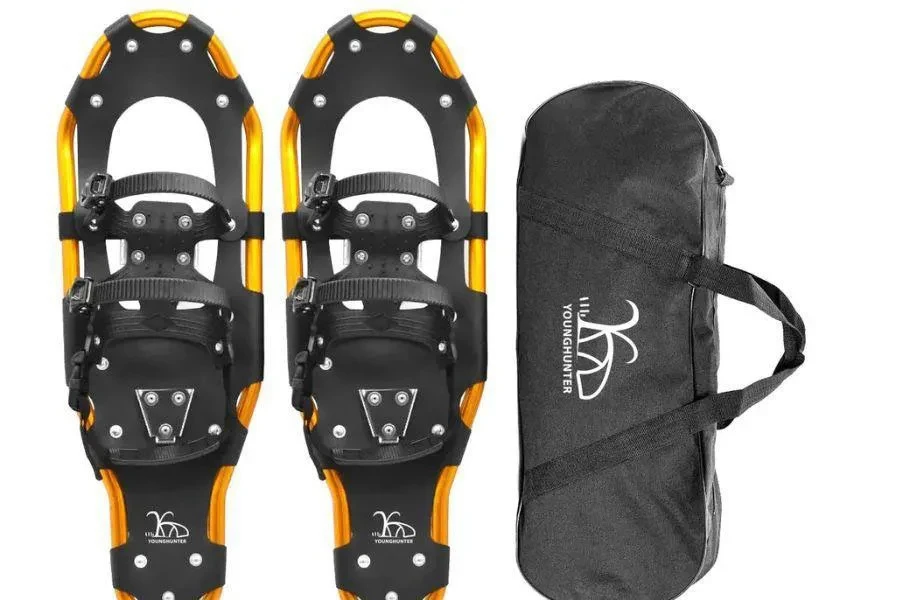
Kids’ snowshoes are meant for young adventurers. They offer extra support and maneuverability thanks to their small and lightweight nature. These shoes also have additional features like padded and adjustable binding systems for optimized comfort.
According to Google Ads, average monthly searches for youth snowshoes, a related keyword, increased by 8.55% in the past year. This uptick in interest signifies a growing, family-oriented market segment that businesses can effectively tap into.
Important factors to consider when buying snowshoes
Material and durability
The material that a snowshoe is made from determines its functionality and durability. For instance, shoes with aluminum frames are usually considered more durable, lightweight, and corrosion-resistant. On the other hand, snowshoes made with composite materials balance weight and durability, making them versatile for different landscapes.
As a seller, you should choose snowshoes that align with the needs and preferences of your customers. However, by offering multiple options, from lightweight aluminum snowshoes to versatile composite material options, you can also increase the chances of your customers finding the perfect model and fit.
Snowshoe comparison guide
Below we’ll take a look at the different materials that snowshoes are made from and how they compare:
| Material | Features | Description |
| Aluminum | Lightweight, durable, good traction | Ideal for various terrains; offer durability and lightness |
| Composite | Flexible, low-temperature resistant | Suited for cold weather; flexible and temperature-resistant |
| Wooden | Traditional aesthetic, natural flexibility | Classic look with natural flexibility; great for deep snow |
| Carbon Fiber | Extremely lightweight, high strength | Premium choice for ultimate lightness and strength |
Traction systems
As a seller, you must also understand how different snowshoe crampon systems affect their traction system. As a rule of thumb, aggressive, pointed crampons are better suited to icier surfaces and steep climbs and descents. On the other hand, snowshoes designed for recreation and running will have less aggressive crampons for smoother movement.
By stocking various options, you will be able to better meet different customer needs based on their intended activities.
Binding systems
Binding systems connect the snowshoes to the user’s boot. When stocking, look for easy-to-use and secure options, as well as those with quick-adjust mechanisms.
Remember, the user experience is paramount, and the more satisfied your customers are with your product, the more likely they’ll return or recommend your store to others.
Frame design and shape
The frame design and shape of snowshoes directly impacts their performance. To cater to customers looking for running or recreation snowshoes, consider stocking oval or traditional-shaped snowshoes as these are more suited to the movements and agility required for these activities. On the other hand, stock tapered or teardrop-shaped shoes if your customers prefer backcountry or mountaineering activities as these shapes are optimized for more challenging terrains and rigorous climbs, providing better maneuverability and traction.
Weight capacity
Different users have different weight capacities. Heavier wearers will benefit from snowshoes with solid frames, durable materials, and wide bases for extra balance. Meanwhile, lighter individuals may prefer snowshoes with more compact designs.
As a seller, the goal should be to stock shoes with varying weight capacities to meet different customer needs.
Price point and supplier reputation
Price points determine whether or not customers will be able to afford your snowshoes. Some customers may be willing to spend more for premium features like advanced binding systems, while others may prioritize affordability over additional features.
The supplier you source from is also a crucial factor to consider. Consider reputable brands with a positive track record to enhance consumer confidence in your products.
Eco-friendly and ethical considerations
Finally, when evaluating suppliers, look for those that prioritize sustainability throughout their production processes. Specifically, opt for snowshoes crafted from eco-conscious materials, such as composite materials made from recycled plastics or other sustainable sources.
However, it’s crucial to maintain a balance between sustainability and performance, with some manufacturers perhaps paying more attention to the former at the expense of the latter, which may not align with the expectations of all customers.
Conclusion
The snowshoe market continues to grow thanks to the increasing popularity of winter activities and a growing interest in outdoor sports. These factors mean that there is a diversified demand for snowshoes that businesses can maximize on.
However, for sellers to fully tap into this market, understanding and adapting to customer preferences is key. This means not only recognizing general trends in the market but also paying close attention to your target audience’s specific needs and desires.
Luckily, Chovm.com provides the ideal platform to keep tabs on market trends and, better yet, source snowshoes from respected brands.





 বাংলা
বাংলা Nederlands
Nederlands English
English Français
Français Deutsch
Deutsch हिन्दी
हिन्दी Bahasa Indonesia
Bahasa Indonesia Italiano
Italiano 日本語
日本語 한국어
한국어 Bahasa Melayu
Bahasa Melayu മലയാളം
മലയാളം پښتو
پښتو فارسی
فارسی Polski
Polski Português
Português Русский
Русский Español
Español Kiswahili
Kiswahili ไทย
ไทย Türkçe
Türkçe اردو
اردو Tiếng Việt
Tiếng Việt isiXhosa
isiXhosa Zulu
Zulu